4.2.1.Specifying the source and target archive connection settings
The Source archive (iQ.Suite Store)
To configure the iQ.Suite connection, select it in the Source archive dropdown-list and click the Configure button in the dialog.
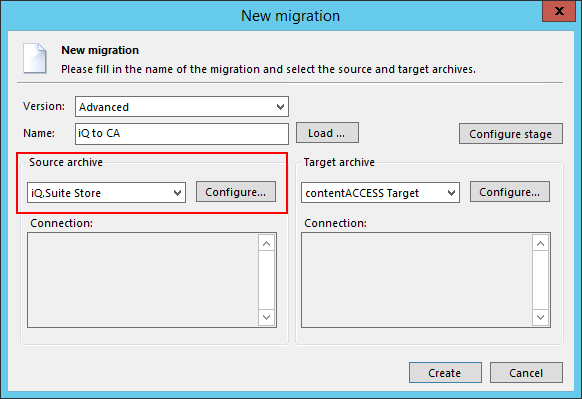
The iQ.Suite connection dialog opens. It requires to specify the following connection settings:
Server: Specify the machine where iQ.Suite Store is installed. “localhost” may be used if both contentGATE and iQ.Suite Store are installed on the same machine.
User name, Password: user credentials that can be applied to connect to the server above
Further click on “Change” to specify the connection parameters of the iQ.Store database:
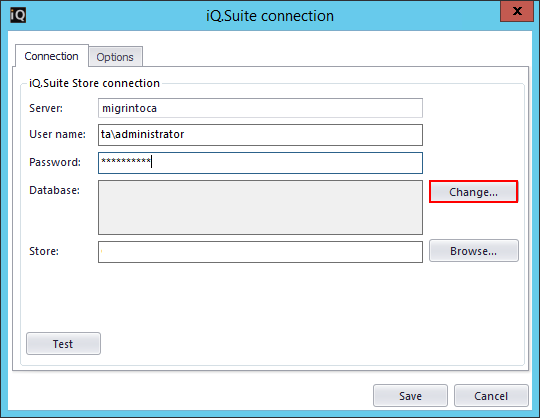
The following pop-up dialog requires to specify the following database connection parameters:
SQL server: where the MS SQL database server that iQ Store uses is installed
User name, Password: user credentials that can be applied to connect to the SQL database
Database: the available databases on the SQL will be listed; select the database that iQ Store uses.
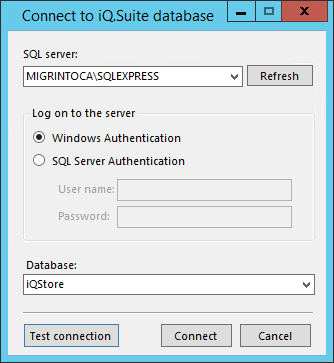
We recommend you to test the database connection using the Test connection button in the dialog. Further click on Connect. Back in the initial dialog specify the iQ.Suite Store directory. Click Browse to locate it, test the connection and save your settings:
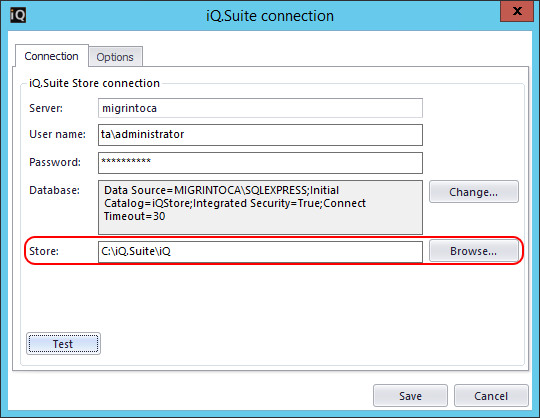
The Target archive (contentACCESS Email archive)
Choose contentACCESS Target from the list of target archives and click on Configure.
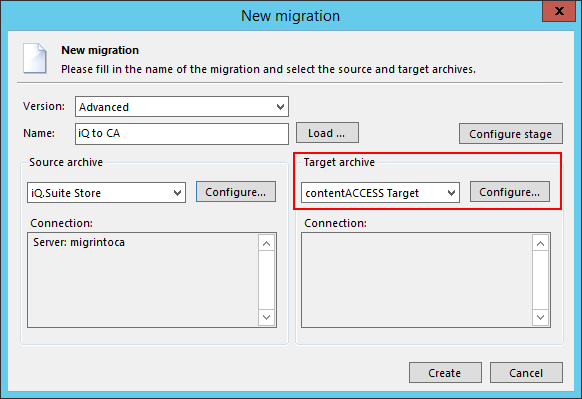
Click “Configure connection …” in the next dialog.
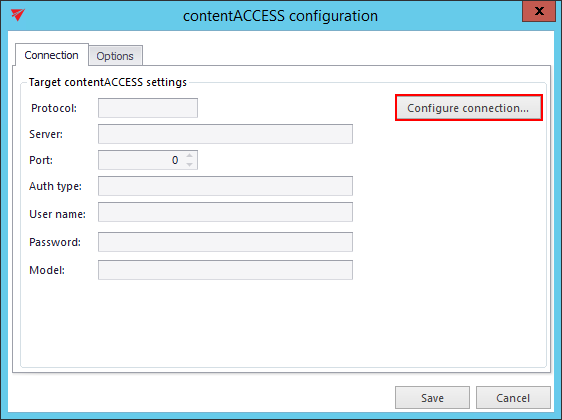
Further enter the server name and port of your contentACCESS installation and click “Next”.
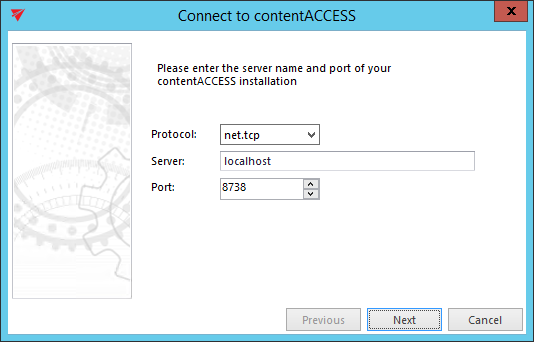
Choose the Authentication type to be used to connect to contentACCESS and enter the applicable user credentials. It is recommended to use an account with at least tenant administrator level permissions. Click “Next”.
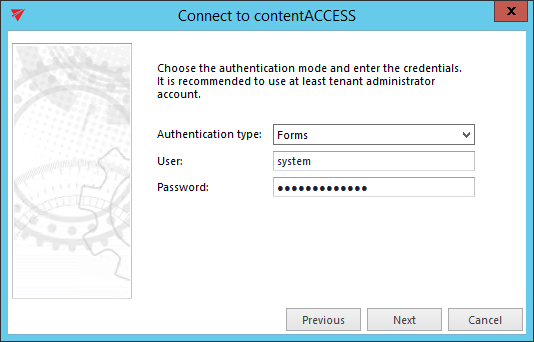
The next dialog will list all available models based on your contentACCESS license. Choose the Email archive (techarrow) model, which will be the target of this migration and click “Finish”.
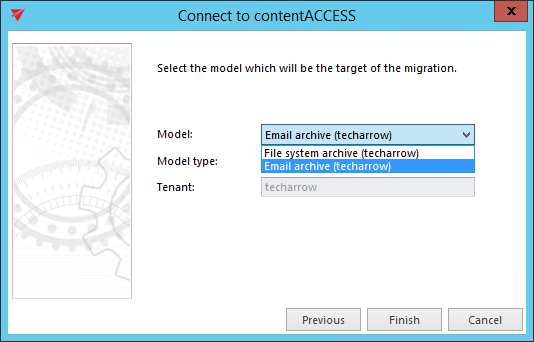
Once the source and target archive connection is set, click on “Create” back in the very first “New migration” dialog:
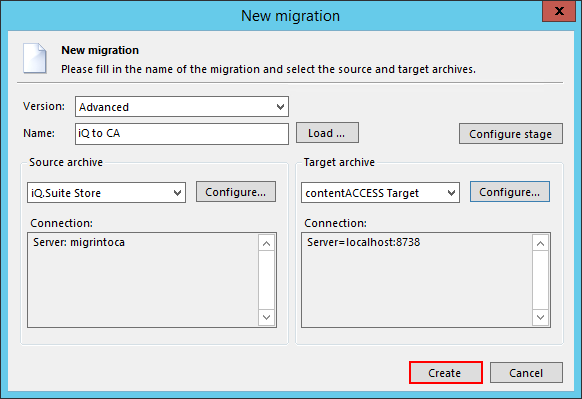
The migration project is now added to the Archive Explorer pane of contentGATE. Now it can be configured using its management interface.
